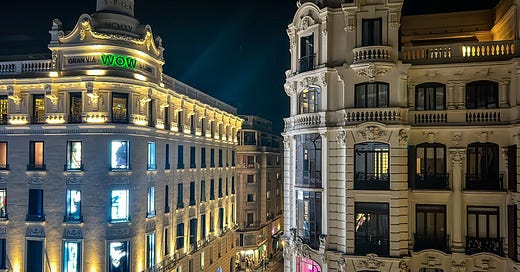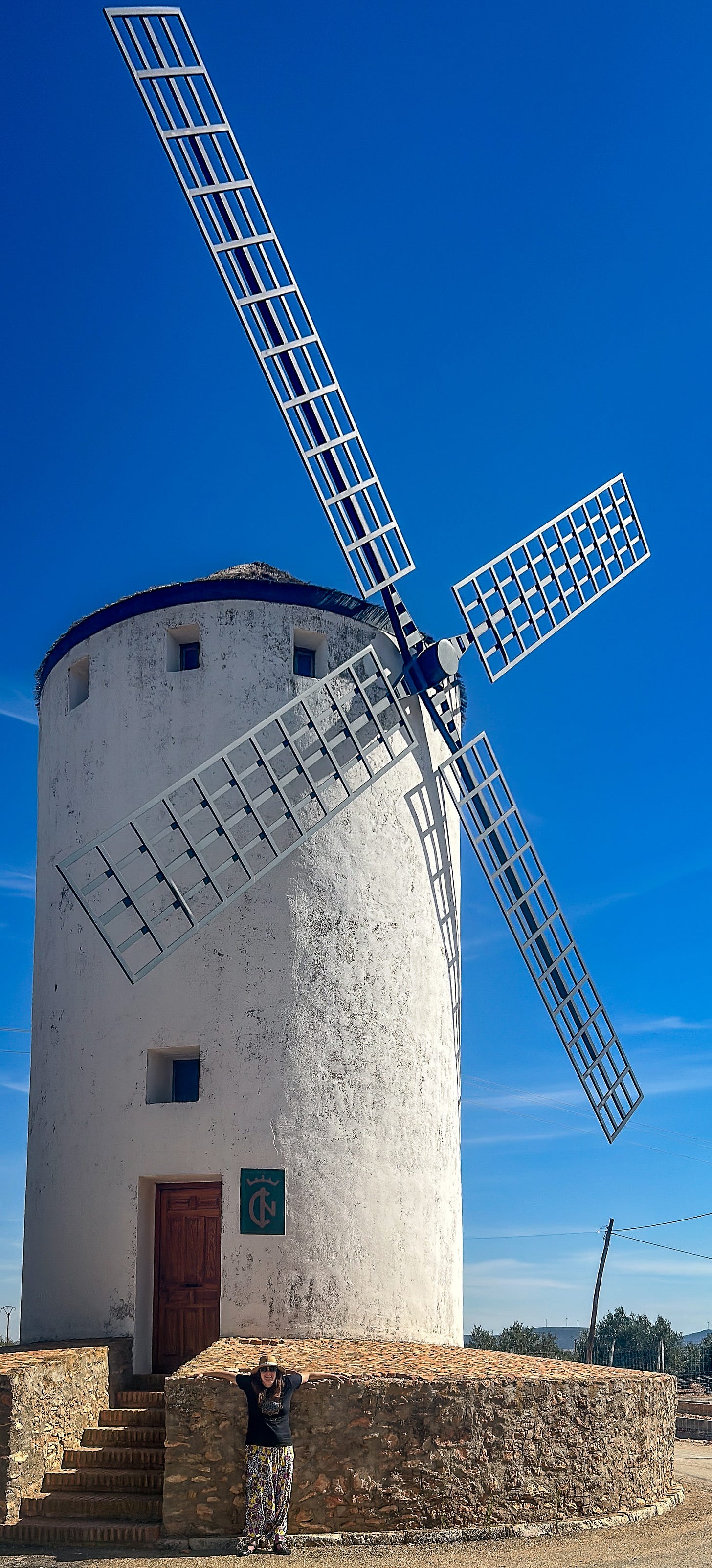MADRID, Spain — “So, how’s it going?” Tim Carl asked.
My daughter, Ariel, and I were sitting in a tavern sipping tinto de verano when I heard from him, back in Napa Valley. “Any chance you could write the story for Sunday?”
“Oh, sure,” I said. That was the tinto speaking, perhaps.
There is a spell that overtakes wanderers in Spain. As Ariel and I ambled from Barcelona to Madrid by way of Granada these past weeks, I noticed we were gradually slowing down, feeling less of an urge to see everything on Rick Steves’ check lists and instead savoring moments here and there, appreciating siestas and going out in the cool evenings, taking detours, lingering, taking side roads.
Savoring moments: My best memory of Barcelona was when Ariel dropped an earring in a sidewalk grate in front of Gaudí’s “La Sagrada Familia” and drew an international crowd — German, Chinese, Somali, Vietnamese — to help her fish it out. I just took photos.
Taking detours: We were driving along the Costa del Sol, when Ariel’s British fiancé, Douglas, traveling with us via WhatsApp, reminisced about a beach town his family visited when he was a boy, Benidorm, favored by sun-hungry Brits. We found it, and yes, it is filled with pubs serving meat pies, chips and peas. Which we had for dinner while watching Liverpool play Tottenham. Ah, travel in foreign parts. Douglas thought it was hilarious. Ariel explained she is just preparing to live in the U.K.
We eventually arrived in Granada and here is where we lingered, enchanted, maybe because we had rooms in a house in the hillside barrio, El Albaicín, which dates back to medieval times. Our terrace looked out at the Alhambra.
And another detour in La Mancha, caused by a windmill sighting, landed us in a strange tiny village where streets were named for authors. And no people were visible on the narrow streets; but it was siesta time.
But as we were discovering these new worlds, I was still reading Napa Valley Features. And as a traveler, I was struck by two articles Tim Carl had written about our own home and the challenges it faces as a tourist destination and a place where real people live. A glance at the Substack stats showed I wasn’t the only one. An enormous spike in readers looked like two spires of a cathedral for his back-to-back articles, “Napa Valley finds itself between a rock and a hard place” and “The Napa Valley needs a reality check,” which between them garnered nearly 13,000 readers. (Typically stories are read by around 2,000 readers — still impressive stats.)
It reinforced for me that many people are wondering — and often worried — about: what’s the future of our valley, and who is it for? One thing that had struck us, again and again, was the astonishing affordability of Spain: an extravagant dinner in Barcelona with sangria and more tapas than we could eat cost 44 euros, about what we were used to paying for two cocktails in Napa; a tortilla sandwich on the road, 4 euros; paella for two in Granada with more sangria, another 40 euros. As I was emailing back and forth with Tim in Madrid, I told him our enormous goblets of tinto de verano, a luscious iced wine and citrus drink, another 4 euros.
“How about wine?” Tim asked. I hadn’t actually gotten around to ordering wine, I had to admit, the sangria and tintos being too irresistible on a warm Spanish evening. But I checked when we went to dinner that evening (tapas and tintos, 33 euros) and noted that a good bottle of Rioja was 18 euros; but more than this, I observed that the restaurant, like most of the others we’d found, had a lively mix of Spanish diners mixed in with tourists, people out for an evening in their town, be it Córdoba or Madrid.
This brought me back home to the first draft of an article a writer sent to Napa Valley Features about how hard it is becoming for locals to dine out in the valley because prices this summer have risen so drastically. It’s a work in progress because the unanswered question is why it is happening, and, as this writer wondered, whether the valley is becoming a place where only tourists can enjoy a dinner.
Tim’s articles are the start of trying to understand the forces at work — the why behind the transformation of the valley and the all-important question, not only of who can visit it but who can live here.
But the other articles that ran last week showed more aspects of our valley: A first-time contributor to Napa Valley Features by one of my favorite writers, Tony Poer, looked back at the career of Ted Edwards, who is now retired after decades at Freemark Abbey. Virginie Boone wrote about Tom Gamble’s commitment to sauvignon blanc in a world of cabernet. Jeni Olsen looked at youth and mental health and Dave Stoneberg reviewed Jay Greene’s long service sharing his love of all history at the St. Helena Public Library. These stories, these people, are at the heart of Napa Valley; they tell its story, the real one. They are, beyond the hype and glitz and branding, the real Napa.
Sitting in a tavern, half a world away, thinking about the adventures of travel while sipping my tinto, I find myself hoping that Napa Valley, searching “between a rock and a hard place,” stays a place where visitors can enjoy it as much as we are delighting in Spain — and so can the locals.
There are stories to tell, and your support will make this possible. Tim’s two stories brought in nearly 200 new subscribers and we hope you will consider joining them, if you have not already.
Sasha Paulsen is a journalist and novelist who lives in Napa.







Thanks for sharing your thoughts about the affordability of living here in Napa. On one hand there are some benefits of high-end tourism leaving lots of $$ here, yet on the other hand, there are some outlandish draw-backs.
Wonderful! I feel that I’ve been on the trip with you, Sasha! Toni A.